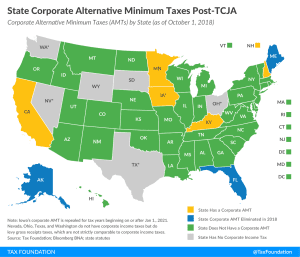
All Related Articles


EU Likely to Pause on Digital Tax Push
2 min read

2019 Tax Brackets
The IRS recently released its 2019 individual income tax brackets and rates. Check out the new standard deduction, child tax credit, earned income tax credit, rates and brackets, and more.
5 min read



Corporate Tax Rates Around the World, 2018
Since 1980, the worldwide average statutory corporate tax rate has consistently decreased as countries have realized the negative impact that corporate taxes have on business investment decisions.
11 min read


Cyber Monday, Post-Wayfair Edition
2 min read



A Path Forward for Greece
4 min read



